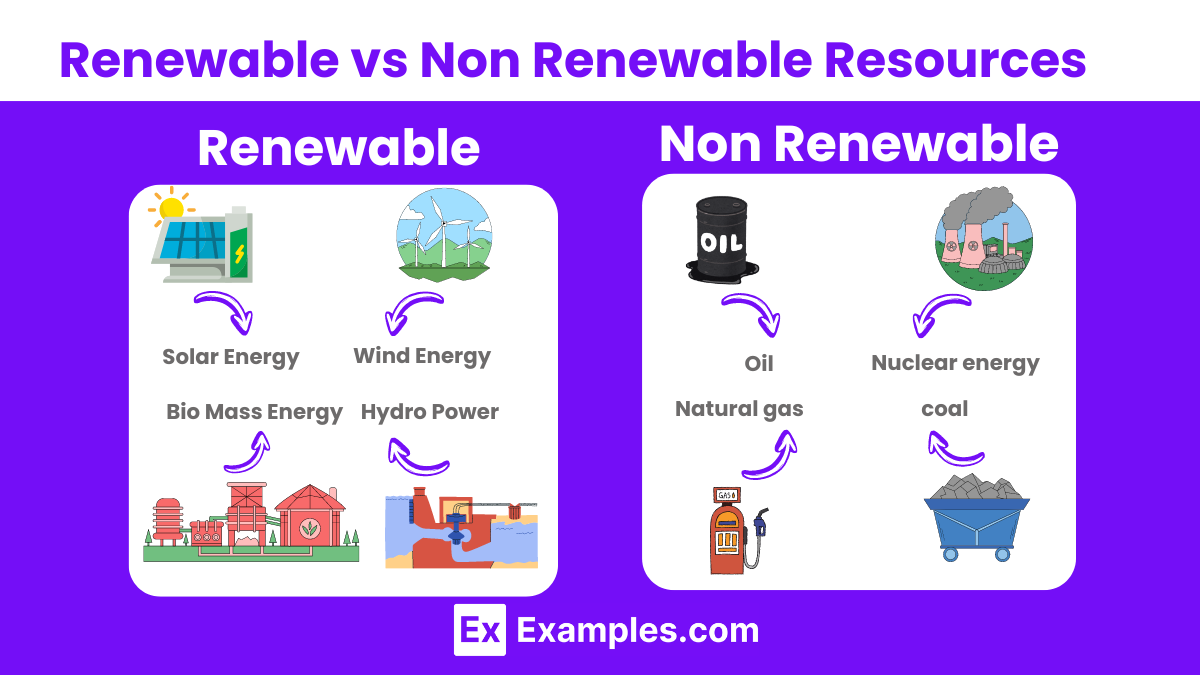Which of the following is a renewable resource?
Coal
Natural Gas
Wind
Oil

Resources on Earth can be categorized into two distinct types: renewable and non-renewable. Renewable resources are those that can naturally regenerate over periods, such as sunlight, wind, vegetation, and forests. On the other hand, non-renewable resources are those that, once depleted, cannot be restored, including fossil fuels like coal and petroleum.
| Aspect | Renewable Resources | Non-Renewable Resources |
|---|---|---|
| Definition | Resources that can naturally replenish over time. | Resources that cannot be replenished once used. |
| Examples | Wind, solar energy, water, biomass, and geothermal. | Coal, oil, natural gas, and uranium. |
| Availability | Often abundant and replenished continuously. | Limited in supply and can be exhausted. |
| Environmental Impact | Generally lower impact, producing less pollution. | Often have a higher environmental impact due to extraction and use. |
| Sustainability | Sustainable over the long term if managed properly. | Not sustainable over the long term due to finite quantities. |
| Cost Over Time | Costs can decrease as technology improves and accessibility increases. | Costs tend to increase as resources become scarcer. |
| Usage | Power generation, heating, transportation (with technology adaptation), and agriculture. | Power generation, transportation, industrial processes, and manufacturing |
Renewable resources are natural substances or forms of energy that replenish themselves through natural processes within a time frame useful for human life. These resources are sustainable and virtually inexhaustible in human terms, offering an alternative to non-renewable resources that deplete over time. Renewable resources include solar energy, wind energy, water (hydro) power, biomass (organic materials used for energy), and geothermal energy. Each of these can be continuously supplied and harnessed for electricity generation, heating, and other energy needs, contributing to reduced greenhouse gas emissions and a lesser impact on the environment.
Non-renewable resources are those resources that cannot be replenished or take millions of years to form. They are finite and will eventually be depleted if consumed at a rate faster than their natural rate of formation. Examples include fossil fuels (coal, crude oil, natural gas) and minerals like uranium. Once used, these resources cannot be replaced within a human lifespan, making them unsustainable in the long term.
Renewable resources are considered better than nonrenewable for several reasons:
Text prompt
Add Tone
10 Examples of Public speaking
20 Examples of Gas lighting
Which of the following is a renewable resource?
Coal
Natural Gas
Wind
Oil
Which resource is considered non-renewable?
Solar energy
Biomass
Geothermal energy
Petroleum
What characteristic distinguishes renewable resources from non-renewable resources?
Availability in the Earth's crust
Ability to be recycled
Speed of natural replenishment
Ease of extraction
Which of the following energy sources is renewable?
Coal
Natural gas
Hydropower
Nuclear energy
Which non-renewable resource is commonly used for electricity generation and has high carbon emissions?
Wind
Solar
Coal
Hydropower
Which resource can be classified as both renewable and non-renewable, depending on its usage and management?
Biomass
Natural gas
Uranium
Oil
What is the main disadvantage of using non-renewable resources?
High initial cost
Limited availability and environmental impact
Dependency on weather conditions
Unlimited supply
Which renewable resource is harnessed using photovoltaic cells?
Wind
Solar
Biomass
Geothermal
What is a common feature of renewable energy sources?
They emit high levels of greenhouse gases
They can be depleted quickly
They are sustainable and have low environmental impact
They are expensive to maintain
Which of the following is an advantage of using renewable resources?
They are available in limited quantities
They produce minimal pollution
They are often less efficient than non-renewable resources
They require complex extraction processes
Before you leave, take our quick quiz to enhance your learning!

